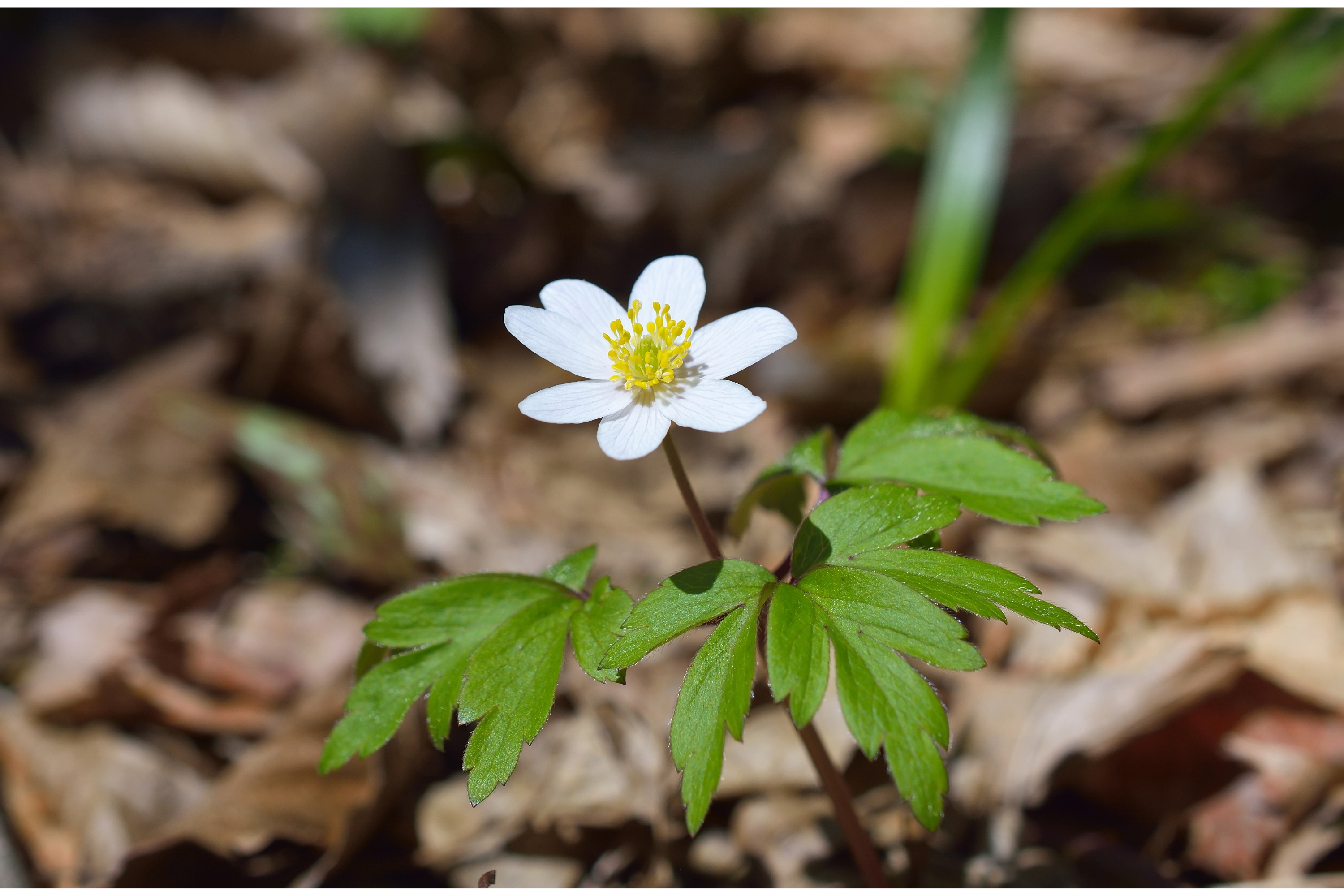Windflower
(Anemone nemorosa)

Description
Anemone nemorosa, commonly known as wood anemone or windflower, is a perennial herbaceous plant that belongs to the buttercup family (Ranunculaceae). It is a native plant of Europe and Asia and is widely distributed in woodlands, hedgerows, and meadows. Taxonomy and Nomenclature: The genus Anemone comprises around 120 species that are widely distributed in temperate and subarctic regions of the world. The specific epithet "nemorosa" means "of the woods" in Latin, indicating its natural habitat. Description: Anemone nemorosa is a low-growing plant that typically reaches a height of 5-30 cm. It has a rhizomatous root system that allows it to spread and form dense colonies. The leaves are basal, trifoliate, and palmately divided into three segments. The leaflets are ovate to rounded in shape and have serrated edges. The stem is slender, erect, and bears a single white or pinkish flower on top. The flower has six petal-like sepals that are obovate in shape and surround a central cluster of yellow stamens. The flowers are solitary, but several flowers can be present on a single stem. The plant blooms from March to May, and the flowers last for about a week. Distribution and Habitat: Anemone nemorosa is a widespread plant that occurs throughout Europe, from the Iberian Peninsula in the west to Russia in the east. It is also found in Asia, from Turkey in the south to Siberia in the north. It grows in a variety of habitats, including deciduous woodlands, coniferous forests, hedgerows, meadows, and rocky slopes. It prefers well-drained, moist soils with a neutral to slightly acidic pH. Cultivation: Anemone nemorosa is a popular garden plant that is easy to grow and care for. It prefers partial shade and moist, well-drained soil. It can be propagated by division or by sowing seeds in the fall. The plant can also self-seed and form large colonies over time. It is a good choice for naturalizing in woodlands or under trees. In gardens, it can be used as a ground cover or as an accent plant in rock gardens. Uses: Anemone nemorosa has been used in traditional medicine to treat various ailments, including headaches, rheumatism, and gout. The plant contains various compounds, including saponins, alkaloids, and flavonoids, that have been shown to have anti-inflammatory, analgesic, and antitumor properties. However, caution is advised when using the plant as it can be toxic if ingested in large amounts. In addition to its medicinal uses, Anemone nemorosa is also used in the horticultural industry. Its delicate flowers are a popular choice for spring floral arrangements, and the plant is often used as an ornamental plant in gardens and landscapes. Conservation Status: Anemone nemorosa is a widespread and common plant, and its populations are generally stable. However, in some areas, the plant is threatened by habitat loss due to the destruction of woodlands and meadows. The plant is protected under the Wildlife and Countryside Act in the UK, and it is also listed as a species of concern in some other countries. Conclusion: Anemone nemorosa is a beautiful and versatile plant that is a popular choice for gardens and landscapes. Its delicate flowers and easy-to-grow nature make it a favorite among gardeners, and its medicinal uses have made it an important plant in traditional medicine.
Taxonomic tree:







